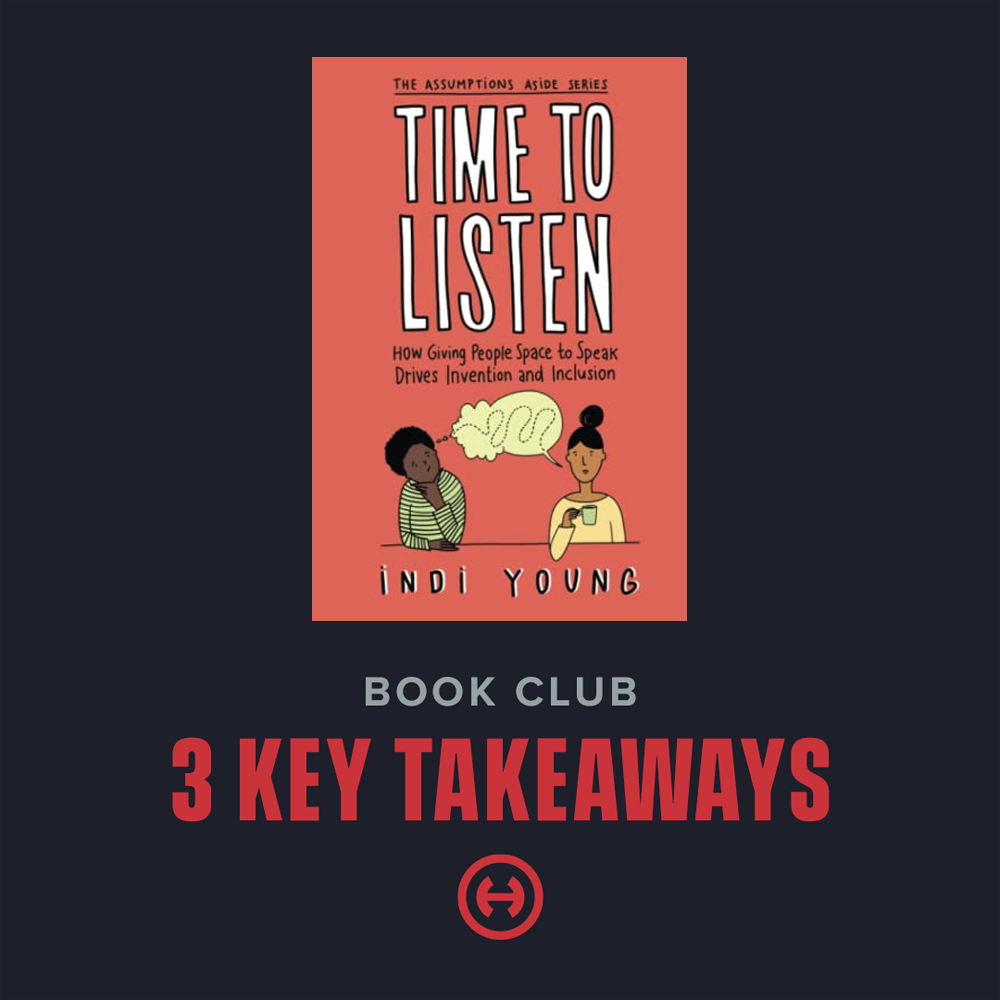At our latest agency book club, we discussed “Time To Listen: How Giving People Space to Speak Drives Invention and Inclusion” by Indi Young. A world-class researcher, Indi poses questions for brands to evaluate purpose and guiding principles. Listening to diverse perspectives leads to building better solutions and strategies that move brands’ bottom lines. If you’re ready to give ear to measurable strategies rooted in listening deeply, consider picking up a copy here. If not, here are three key takeaways.
- Listening Deeply
So often we listen to reply instead of listening to understand. Indi Young challenges readers to step outside of that mindset and into a practice called deep listening. During one-on-one communications, deep listening allows the speaker the freedom to get past the tension of feeling worried or judged for asking questions. Young says that as leaders, deep listening should be a 90/10 split.
Ninety percent of your cognition should be focused on paying rapt attention to the other person, while the remaining 10% is processing the information to find opportunities that encourage the speaker to unfold their thoughts even further. Don’t lead the conversation with probing questions; instead, follow their train of thought and ask that they elaborate in an organic way. Young reminds readers that not everyone communicates the same way, so listening to preferences in those one-on-one moments can help foster a safe space for communication.
- Safe Spaces and Innovation
In order to reach deeper listening, the speaker first must feel that they’re safe to speak their mind. It becomes the listener’s responsibility to host a safe space that recognizes the person’s mood. Body language and emotional tone become valuable tools for listeners attempting to read a mood. Listeners can use the emotional output the speaker presents to flip what Young calls “reactionary” responses. These responses might make the speaker feel judged, when instead we should be validating their feelings with engaging responses. By validating the speaker’s emotions, the safe space lends a level of warmth and authenticity to the conversation that leads to knowledge of what’s working or not working. Leaders can create long-term solutions with the actionable knowledge gained and build broad support and equity for ideas to flourish. This leads to a culture of innovation that branches out across the organization. - Assumptions Aside
Utilizing the safe space created through deeper listening practices, leaders must set aside their assumptions of people’s purpose and instead listen for patterns and opportunities to tackle a new approach. By using cognitive empathy, a practice Young describes as a conscious cultivation and understanding of a person’s inner voice, leaders can gain a more comprehensive view of what drives a person’s purpose. When we put assumptions aside, we begin to recognize patterns that lead to solutions based in culture and purpose. The goal is to listen to another perspective and gain further knowledge about their approach to their purpose.
Deep listening is the lever we can pull to shift away from what may be unintentional harm by attempting to listen to respond. Instead, deep listening can move us toward solutions based in empathy and respect of human complexity. When we take the time to listen, the perspectives and purpose of those around us become clear and deepen the trust among a team to work sharper together.
Interested in learning more about deep listening so teams can work better together to build a brand? Email Nate Tredinnick at ntredinnick@hiebing.com to set up a call.
